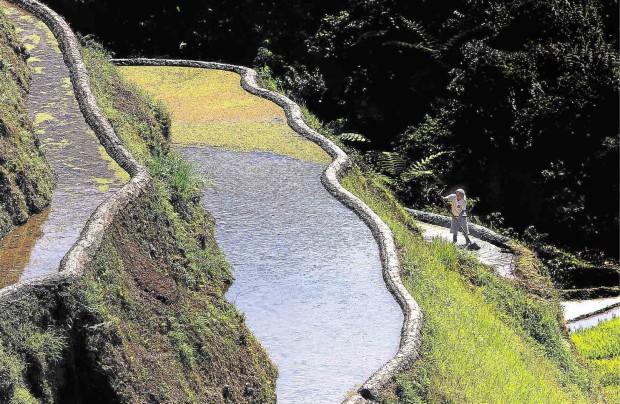
IFUGAO farmers have been tending to their rice terraces by hand for hundreds of years. But the government intends to offer terrace rice producers machinery to improve their yield. EV ESPIRITU/INQUIRER NORTHERN LUZON
BAGUIO CITY—Indigenous rice grown on terrace farms in Ifugao and Mountain Province is being reclassified as a high-value crop to improve the farming economy of the Cordillera.
Kalinga province is the region’s primary rice producer but the low yield of heirloom rice is also pulling down agriculture production from a negative 0.3 percent in 2014 to a negative 4.1 percent in 2015.
The Department of Agriculture (DA) has proposed a P300-million budget for 2017 to mechanize terrace farming and repair damaged terraces, said Lorenzo Caranguian, DA Cordillera director.
While the Cordillera gross regional domestic product rose from 3.3 percent in 2014 to 3.7 percent last year, the slide in agricultural growth is alarming because farming has the biggest labor force in the region, said Milagros Rimando, the regional director of the National Economic and Development Authority.
Caranguian said Cordillera rice production is limited by terrain.
He added that some 12,000 hectares of farms are planted exclusively to the heirloom rice, “tinawon,” which pulls down rice-production targets in the region.
Terrace farms in Ifugao plant tinawon, which is harvested only once a year, producing up to only 60 bags per hectare. High breed rice can produce up to 200 bags a hectare.
Agriculture Secretary Emmanuel Piñol directed the agency to remove the heirloom rice from its regular rice program and reclassify it as a high-value crop, Caraguian said.
He said the government would not interfere with farmers’ choice of crops but would offer them modern farm tools like microtillers, micropressers and micromills. Vincent Cabreza, Inquirer Northern Luzon